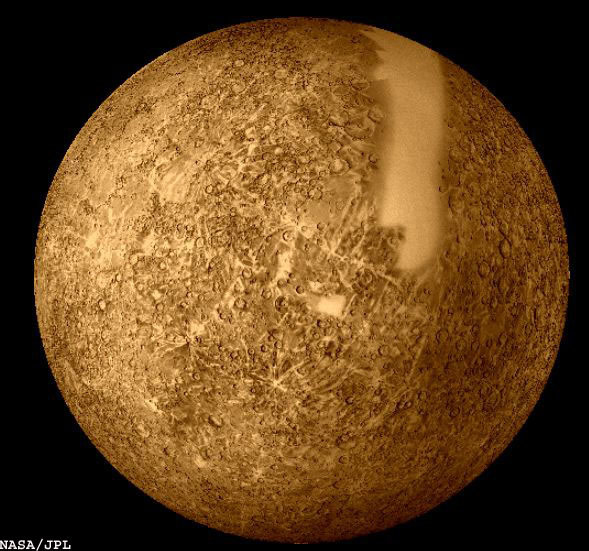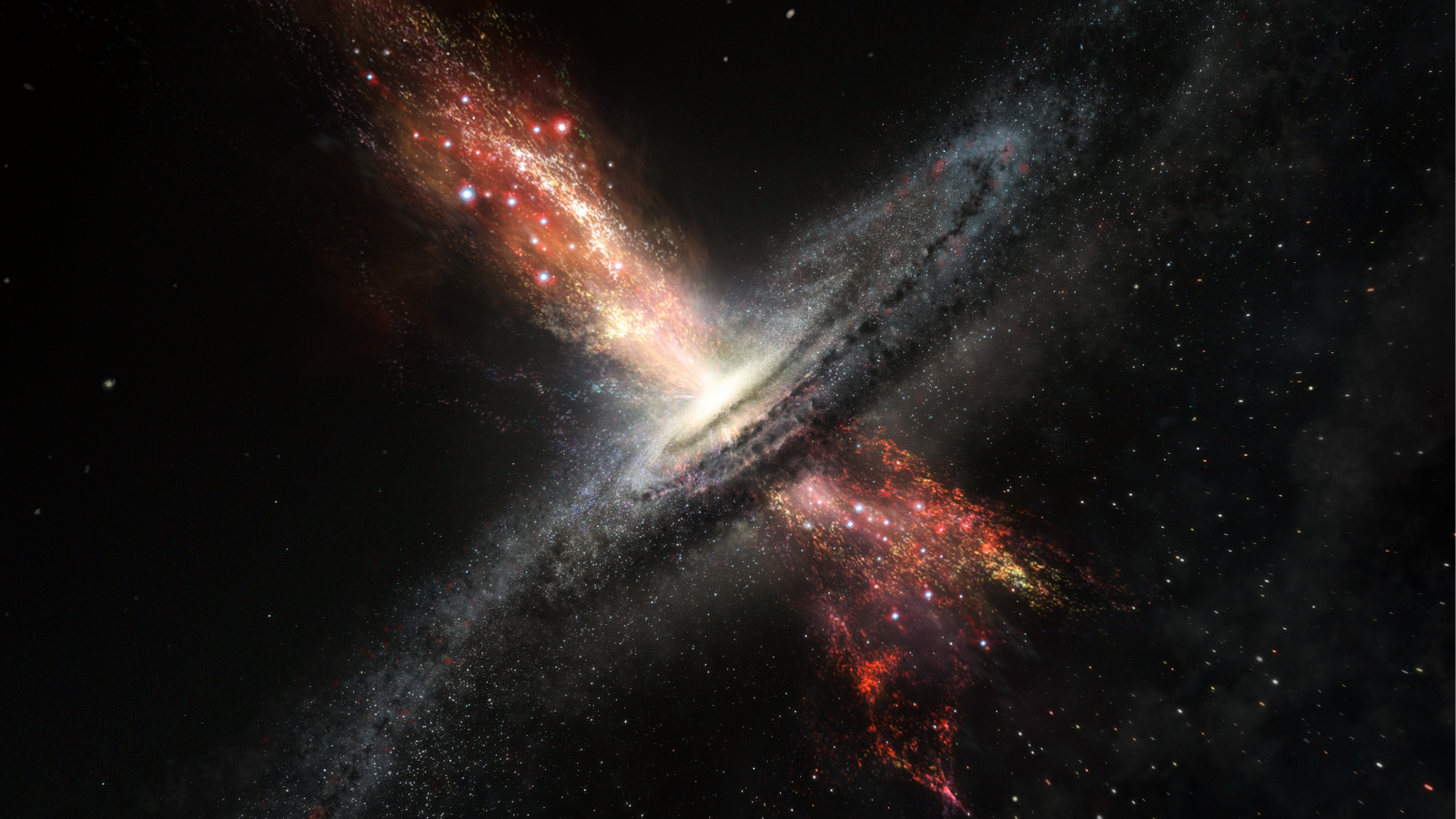The Enduring Mysteries of Mercury

Mercuryis the smallest, densest and least explored planet around the sun. More thanhalf of it is virtually unknown.
Insightsinto this mysteriousworld of extremes could shed light on how planets were made in our solarsystem, astronomers say.
NASA'sMESSENGER probe will be the first spacecraft to image the whole planet, makingits initialflyby of Mercury Jan. 14 as part of a long process to settle into orbit.
"WithMESSENGER, many of Mercury's secrets will now be revealed," said NASA'splanetary science division director James Green. A list of some of these isbelow.
Mercury's hidden side
Theonly spacecraft to ever visit the solar system's innermost world — NASA'sMariner 10 — mapped less than 45 percent of Mercury's surface, a heavilycratered landscape. This means more than half the planet is unknown to us,save for relatively poor observations from Earth-based radars.
"Wecan't get cocky about what the other side of Mercury looks like. So far, everysolar system body has looked very different from every other one," saidFaith Vilas, director of the Multiple Mirror Telescope (MMT) Observatory at Mt.Hopkins, Ariz. "We're expecting some major surprises from it."
Breaking space news, the latest updates on rocket launches, skywatching events and more!
Ice near the sun?
Onthe closest planet to the sun, where temperatures can reach more than 800degrees Fahrenheit (425 degrees Celsius), there might surprisingly be ice. Iceis highly reflective to radar, and Earth-based radar suggests deposits offrozen water might be hidden in deep, dark craters at Mercury's poles that havenever seen sunlight. This water might have come gassing up from within theplanet or from meteorite impacts.
MESSENGERwill search for hydrogen at the permanently shadowed floors of polar craters.If the spacecraft discovers any, MESSENGER may have found ice amidst aninferno.
Is Mercury shrinking?
Mercurycould be shrinkingas its core slowly freezes. Pictures from Mariner 10 revealed the planet'ssurface appears to have buckled from within, resulting in gigantic cliffs morethan a mile high and hundreds of miles long biting into Mercury. MESSENGER willlook for any evidence of such crumpling on the world's hidden side and willalso study the planet's metal core by analyzing that world's magnetic field.
Vulcanoids?
Doa band of small asteroids dubbed "vulcanoids"lie inward of Mercury's orbit, hidden in the glare of the sun?
MESSENGERhas a chance of spotting these asteroids as it approaches Mercury, although itsopportunities are limited. To keep the sun from frying it, MESSENGER hidesitself behind a sunshade pointed at the sun at all times, and its scientificinstruments are pointed away from the sun. Nevertheless, scientists will useMESSENGER "to chase down any hints there might still be a modernpopulation of vulcanoids," said the MESSENGER mission's principal investigatorSean Solomon.
Where does Mercury's atmosphere come from?
Mercury'sincredibly tenuous atmosphere is unstable, with gases regularly escaping theplanet's weak gravity. How Mercury's atmosphere gets constantly replenished isunclear.
Researcherssuspect the hydrogen and helium in Mercury's atmosphere is continuously broughtthere by the solar wind, the supersonic stream of charged particles from thesun. Other gases might have evaporated off Mercury's surface, seeped frominside the planet or been brought in by vaporized meteorites. MESSENGER willclosely study the planet's atmosphere to pinpoint how it gets generated, Vilassaid.
Why is Mercury magnetic?
Acompletely unexpected discovery Mariner 10 made was that Mercury possessed amagnetic field. Planets theoretically generate magnetic fields only if theyspin quickly and possess a molten core. But Mercury takes 59 days to rotate andis so small — just roughly one-third Earth's size — that its core should havecooled off long ago.
Tosolve this mystery, MESSENGER will probe Mercury's magnetic field. There wassome thinking that the field might have become inactive, but last year,scientists discovered Mercury seems tohave a molten core after all, so the planet might still be activelygenerating a magnetic field after all.
Why all that metal?
Mercuryis extraordinarily dense, leading researchers to estimate that its iron-richcore potentially makes up about two-thirds of the planet's mass, a startlingfigure double that of Earth, Venus or Mars. In other words, Mercury's coremight take up roughly three-quarters of the world's diameter.
Onetheory explaining this bizarre density is that huge impacts billions of yearsago might have stripped Mercury of its original surface, Vilas explained,collisions that also shifted the planet toward the sun to its current location.Another theory suggests Mercury simply formed where it now lies.
Tosee which theory concerning Mercury's origins might be right, MESSENGER'sbattery of miniaturized scientific instruments will scope out the planet'sgeology. Understanding how Mercury formed will shed light on how all theplanets evolved, Solomon said.
- Video: Mysterious Metallic Mercury
- Gallery: Images of Mercury
- Mission Update: MESSENGER'S Flyby Plans

Charles Q. Choi is a contributing writer for Space.com and Live Science. He covers all things human origins and astronomy as well as physics, animals and general science topics. Charles has a Master of Arts degree from the University of Missouri-Columbia, School of Journalism and a Bachelor of Arts degree from the University of South Florida. Charles has visited every continent on Earth, drinking rancid yak butter tea in Lhasa, snorkeling with sea lions in the Galapagos and even climbing an iceberg in Antarctica. Visit him at http://www.sciwriter.us
